
Hello medieval-minded food lovers.
Today, I’m talking about a lovely, light, poached chicken dish which I made recently, and particularly about the spicy magic that lifts the dish: powder douce.
Powder douce (poudre douce, powdour douce) is a spice mix that was used in many of the recipes of King Richard II’s household. ‘Cast thereon powder douce’, or something similar, is frequently used throughout Forme of Cury, the king’s official cookery book. I can imagine hearing it shouted by the master cook as the dishes were served forth. But what is powder douce?
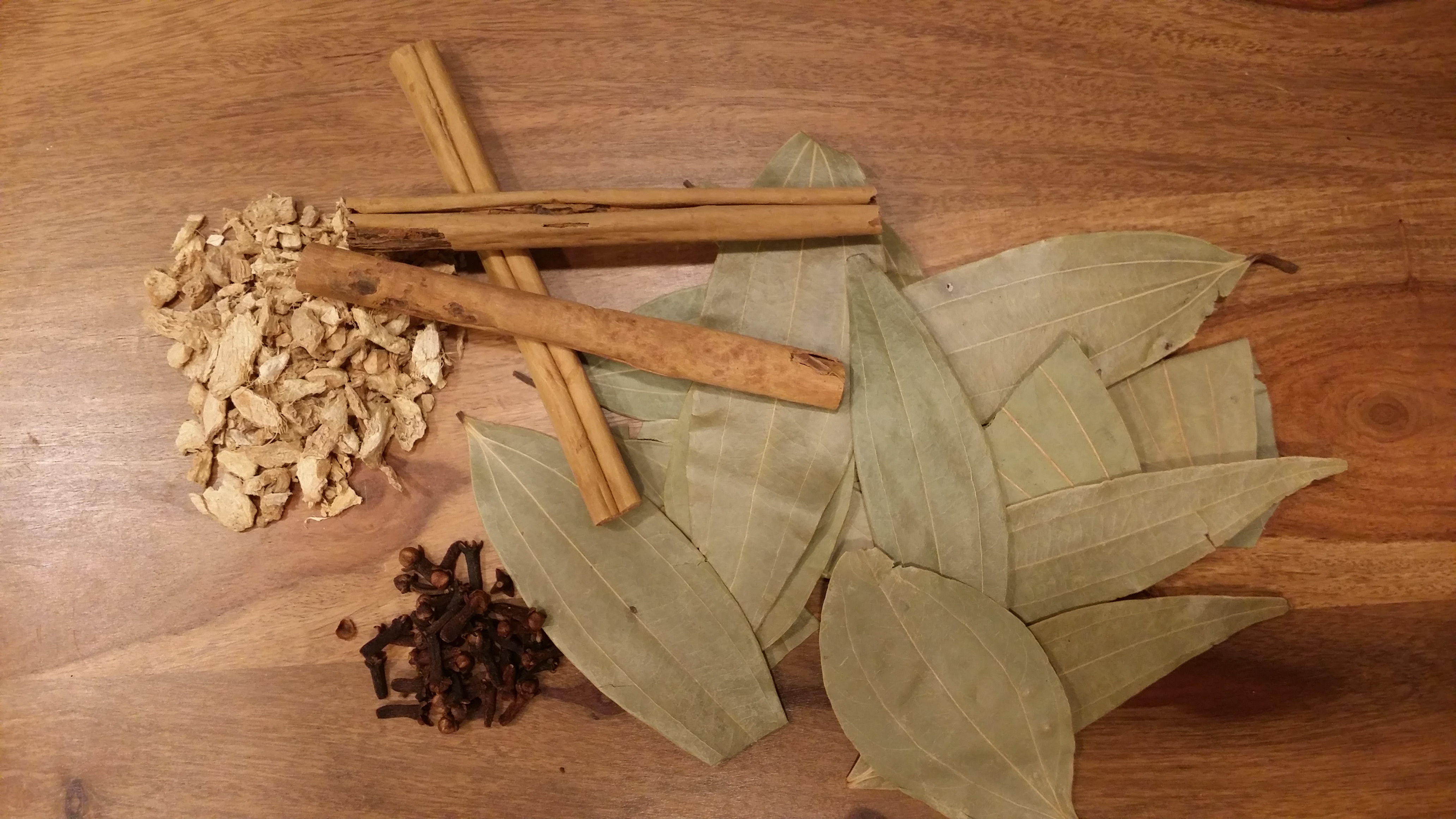
There are no recipes for the mix found in medieval English cookery books, which is slightly annoying! Plenty of commentators have made various suggestions, including that it contained sugar as well as spices. Powder douce — that is, sweet powder — seems to have been taken very literally.
The fact, however, that in English recipes sugar is often given as an ingredient alongside powder douce tends to support the thesis that the spices themselves were judged to be ‘sweet’ in some sense, though we shouldn’t absolutely rule out the possibility of sugar being an element of the mix.
What might help us to identify the ‘sweet’ spices is a contemporaneous Italian cookery book known as Libro di Cucina. We know Italian cuisine influenced English food of the period; this is evident from the inclusion of a number of pasta dishes in Forme of Cury. So it makes sense to avail ourselves of the information in this Italian work, and it just so happens that it does have a recipe for ‘sweet spices’:
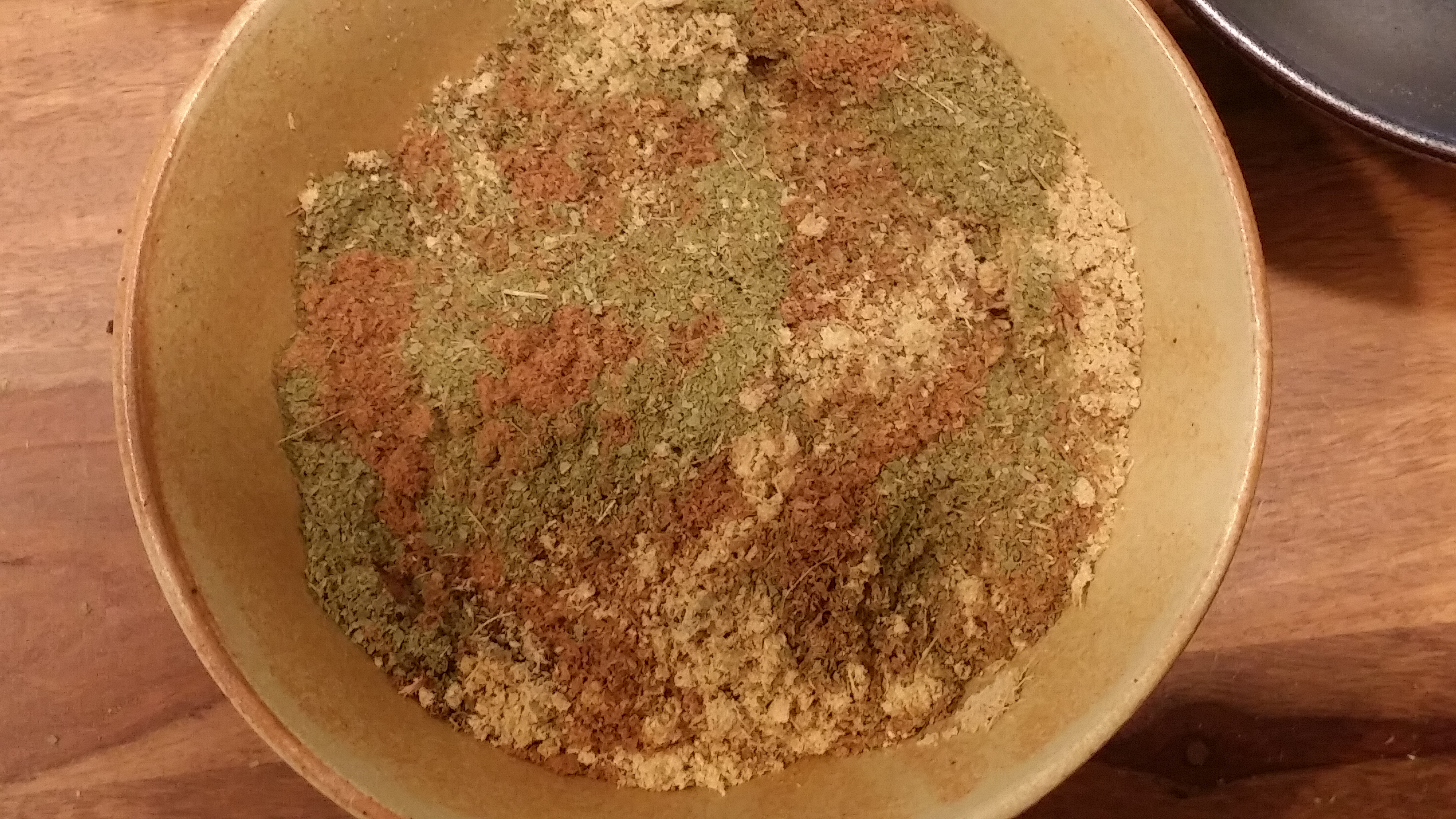
LXXIV. Specie dolce per assay cosse bone e fine.
Le meior specie dolze fine che tu fay se vuoi per lampreda in crosta e per altri boni pessi d’aque dolze che se faga in crosto e per fare bono brodetto e bon savore. Toi uno quarto de garofali e una onza de bon zenzevro e toy una onza de cinamo leto e toy arquanto folio e tute queste specie fay pestare insiema caxa como te piaxe, e se ne vo’ fare piú, toy le cosse a questa medessima raxone et è meravigliosamente bona.
Translation
The best fine sweet spices that you can make, for lamprey pie or for other good fresh water fish that one makes in a pie, and for good broths and sauces. Take a quarter [of an ounce] of cloves, an ounce of good ginger, an ounce of soft [or, sweet] cinnamon, and take a quantity of Indian bay leaves* and grind all these spices together how you please. And if you don’t want to do more, take these things [spices] in the same ration [without grinding] and they will be marvellously good.
Libro di cucina text based on Ludovico Frati’s 1899 edition, available online here. English translation based on Louise Smithson’s, cited by Matha Carlin, though the link to the translation is now broken. *For the meaning ‘Indian bay leaves’, see Frati, ‘Note’ section, p. 78, folio. is also the translation of ‘folio’ that Marco Gavio de Rubeis gives in his Anonimo Veneziano, Libro di Cucina, First Part (I Doni delle Muse, 2021), recipe 2, note 5.
You can imagine that I was very pleased to come across this in my research, for it gave me an authentic base for creating my own powder douce.
As an aside, though still pertinent, the mention of lamprey (an eel-like fish) in this Italian recipe prompted me to check two lamprey recipes mentioned in Forme of Cury.
One was a fish pie in which lamprey was one of the fish options: it uses both powder douce and powder fort (see my post on powder fort here).
The other, Lampreys in Galentine Sauce, doesn’t mention powder douce but does use two of the four spices from the Italian spice mix, namely powder of ginger and powder of cloves, and has the flavour of another of its spices, cinnamon, in the form of cinnamon buds, with the addition of powder of galangal, which is of the ginger family and has a comparable taste.
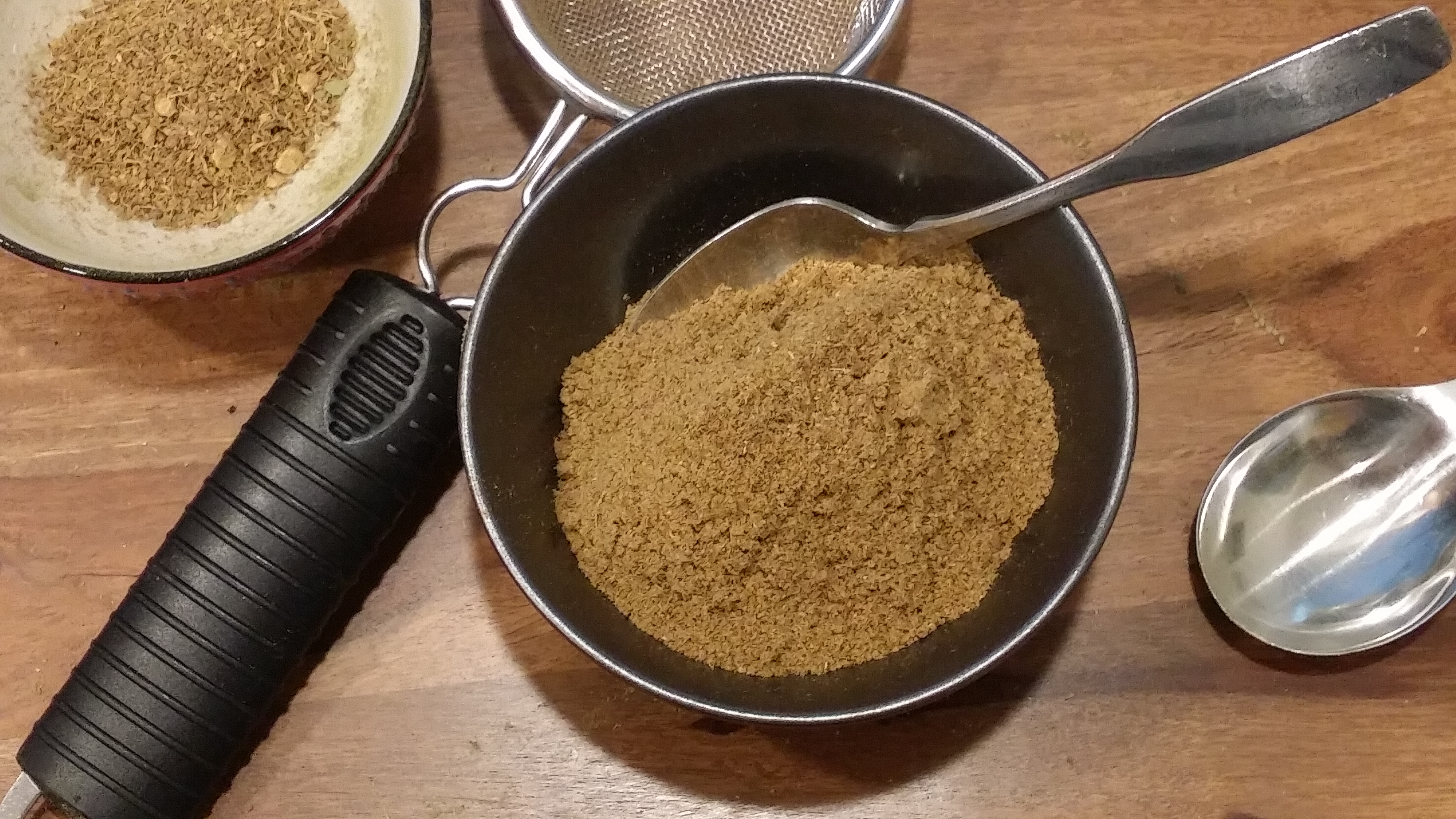
So, to my recipe for powder douce. And to how I used it to spice up the chicken dish mentioned at the outset.
Powder douce:
This gives you approximately half the quantity of the medieval Italian recipe.
15g (½ oz) Ceylon cinnamon bark* (about 2-3 sticks)
15g (½ oz) dried ginger root (whole or pieces)
4g (⅛ oz) whole cloves (up to about 40 individual cloves if the cloves are small, fewer if larger)
1 rounded tablespoon ground Indian bay leaf** (made from a good handful of leaves)
*It’s best to use Ceylon (‘true’) cinnamon rather than cassia bark (often sold as cinnamon); this is what seems to be alluded to by ‘soft cinnamon’ in the Italian recipe; the bark of Ceylon cinnamon is indeed softer and easier to break than cassia.
**Indian bay leaf appears to be implied by the Italian folio (‘leaf’); I haven’t been able to locate a copy of the edition of Libro de cucina that contains the glossary where it is identified as such, so I am trusting the translator’s note on this.
For grinding, a useful tip: use a coffee grinder for cinnamon, ginger root and Indian bay leaves, but DO NOT use a coffee grinder for cloves as the oil from the cloves will stick to and stain any plastic part of the grinder (you may be fine if you have a complete stainless steel grinder). Instead, use a mortar and pestle for the cloves. Or, if you want that authentic feeling of medieval labour, use a mortar and pestle for all the spices.
Grind each spice individually until a fine powder; sieve out any lumpy debris. Then mix the spices well and give one last grind and sieve. Store in an airtight jar. You can, of course, make more mix up than this, but spices do lose their freshness and intensity after grinding, so I think it is better to grind a relatively small amount.
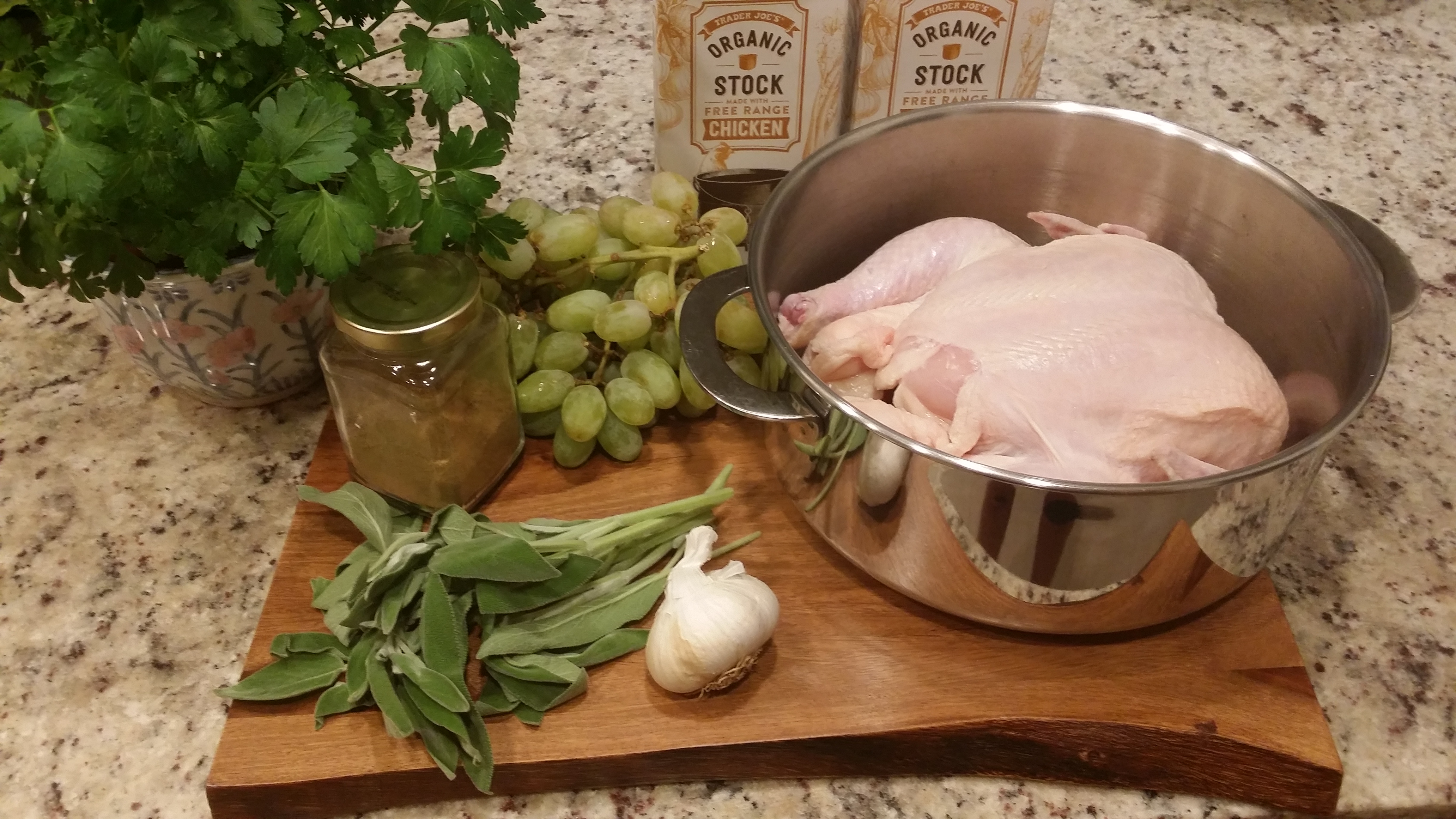
Now for the medieval dish in which I used my powder douce. It goes by the Middle English name of Chykens in hocche, ‘chicken in hodge-podge’:
Chykens in hocche:
Tak chykens & scald hem, take persel, & sauge withouten eny oþer erbes, tak garlek & grapes & stap þe chykens ful & seeþ hem in gode broth, so þat þey may esely be boyled þer inne, messe hem & cast þerto poudour douce.
Chickens in hodge-podge:
Take chickens and scald them; take parsley and sage, but no other herbs; take garlic and grapes and fully stuff the chickens and simmer them in good broth so that they may be slowly cooked; dish them up and cast thereto powder douce.
The edited text and translation are by Christopher Monk © 2019. All rights reserved.
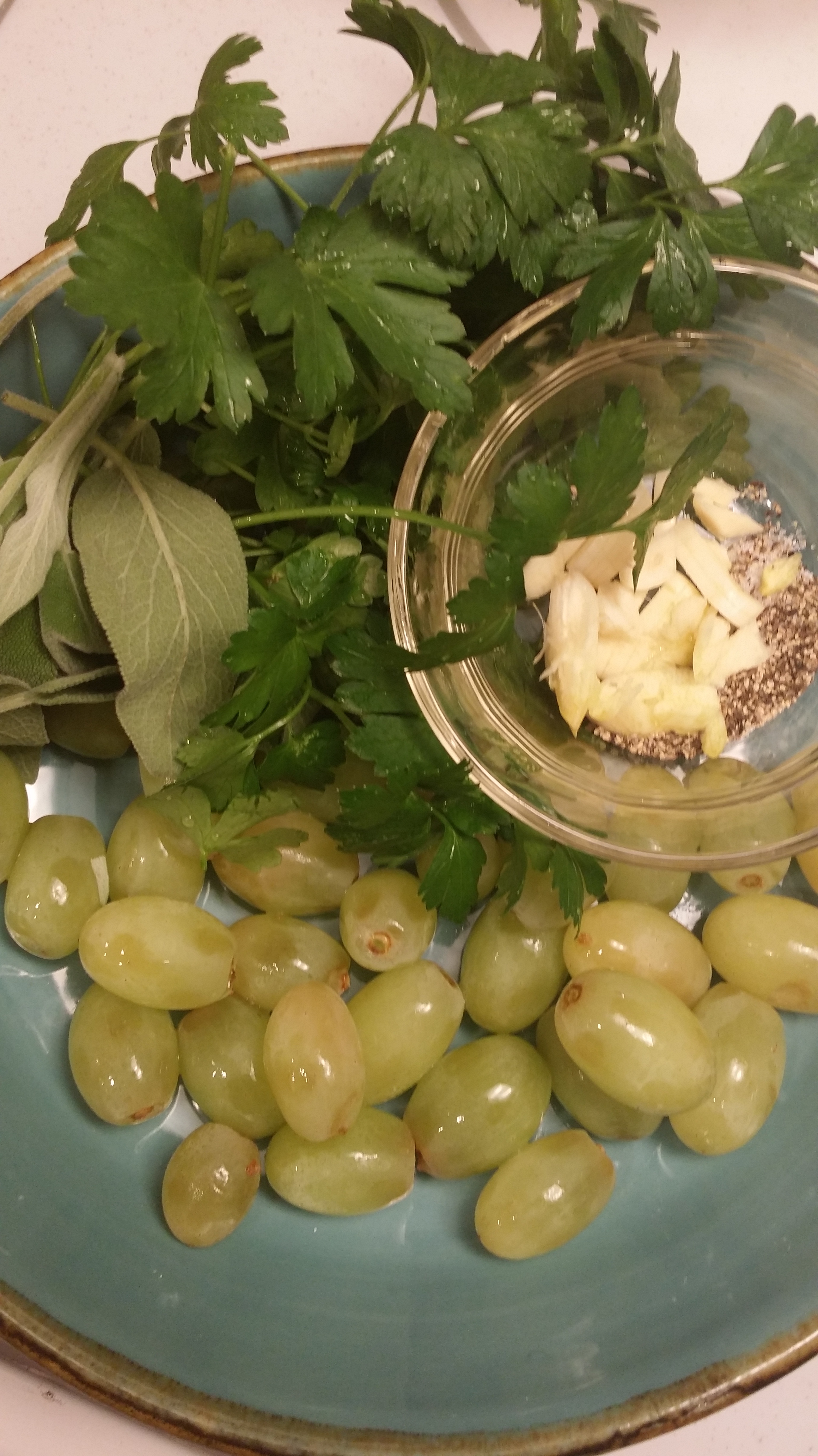
I still wish to develop this dish further before releasing a definitive recipe, but here’s essentially what I did:
I took a bunch of fresh parsley and a handful of fresh sage leaves, salt and pepper, chopped garlic, and grapes and stuffed them into the cavity of an organic free-range chicken.
I placed the chicken into a large pot with organic chicken stock (I normally make my own, but for this I bought two cartons), a few Indian bay leaves, and a little more salt and pepper.
I brought this slowly to simmering point, put the lid on the pan, and then turned the temperature down to maintain a very gentle simmer (barely a bubble), cooking it for approximately an hour (my chicken was medium sized).
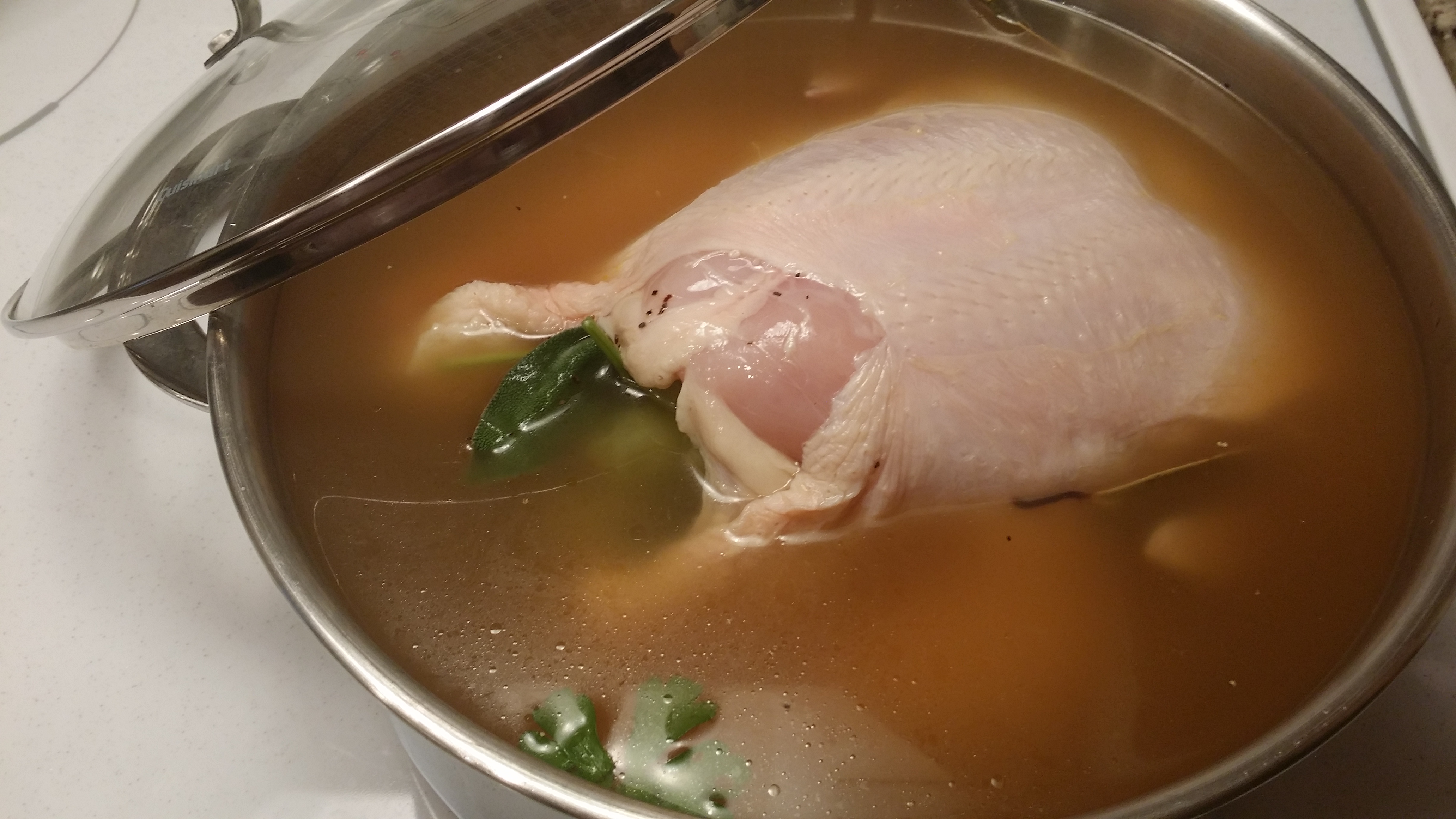
Once the chicken was cooked, I removed it to a carving plate and then added some powder douce (about 4 heaped teaspoons) to the stock and turned off the heat. (Do check your temperatures: recommended temperatures vary for chicken; I cooked mine so that the chicken breast at its thickest point reached 77°C (170°F); there should be no pink or red juices in evidence.)
I strained the stock and reserved some for the final dishing up (the rest was used for making a risotto). I carved the chicken breasts, put this along with the reserved stock into a serving dish and sprinkled a heaped teaspoon of powder douce directly onto the chicken breast.

I served some of the grapes and garlic from the stuffing alongside the chicken with a bowl of rice and some asparagus. I really enjoyed it. Very light and delicately spicy.
As I said, above, I am going to develop this recipe further before filming it for my video series. I think I would like to boost the spice quotient, so I will probably add whole spices to the broth as the chicken poaches: a cinnamon stick or two, a few cloves, a few slices of ginger root, and a handful of Indian bay leaves. I may also put the herbs into the broth, rather than stuff them into the chicken cavity.
So please stay tuned, and do let me know if you have a go yourself!
Please

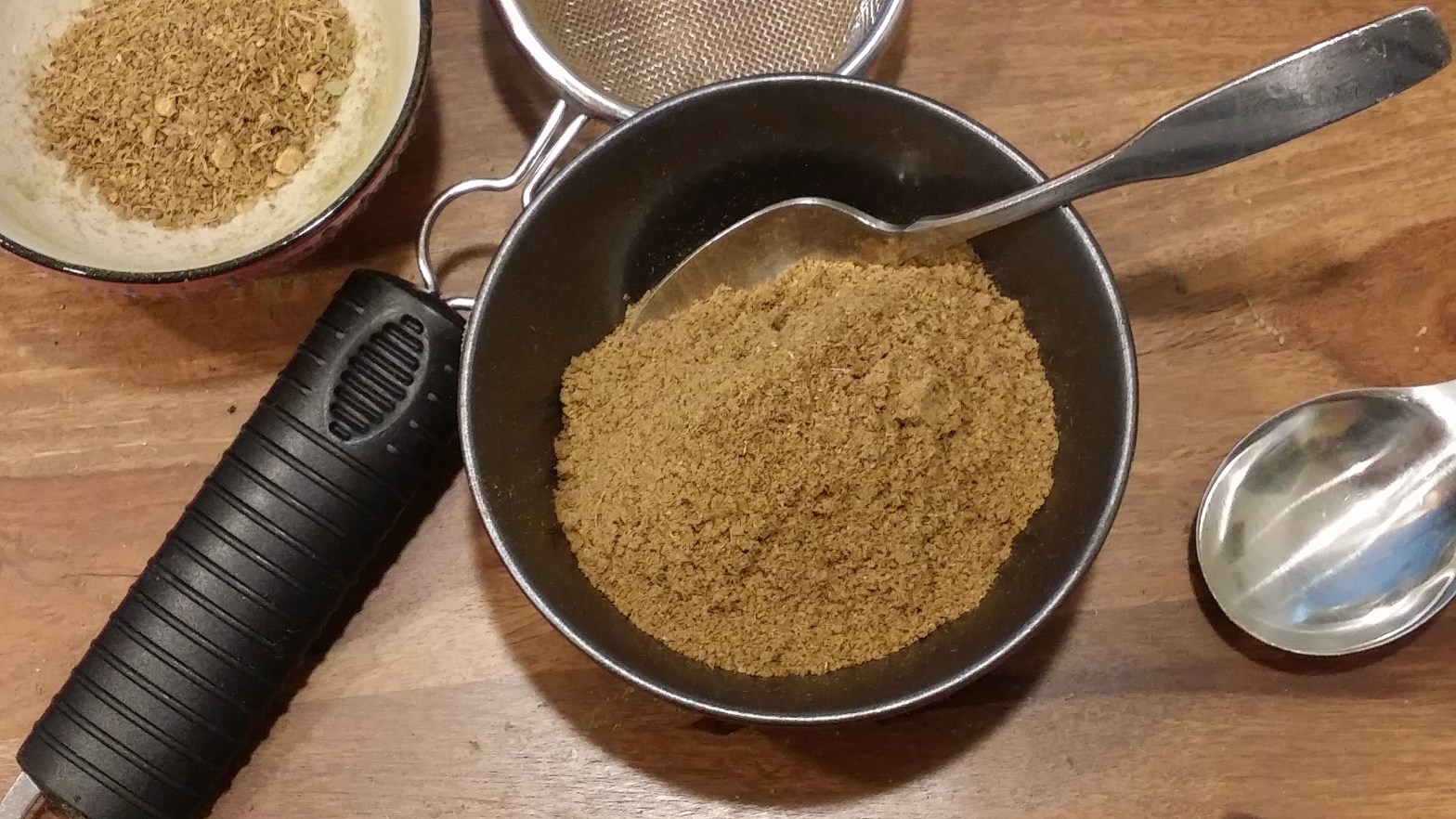
It seems you have unravelled the mystery of powders sweet ahd fort. Surprisingly, they arevery similar.
LikeLiked by 1 person
My apologies for missing your comment last year. Thank you.
LikeLike
Interesting just re-reading this after reading your latest on parsley. I still think of cinnamon, cloves, ginger, cardamom, and some others as “sweet” spices. Cool!
LikeLiked by 1 person
there’s a recipe for the powder in the Forme ofCury
LikeLike
I’m afraid there is no recipe for powder douce in Fourme of Cury. It’s listed as an ingredient lots of times but there’s never any instruction on what spices were used. It is possible the spices varied from kitchen to kitchen.
LikeLike